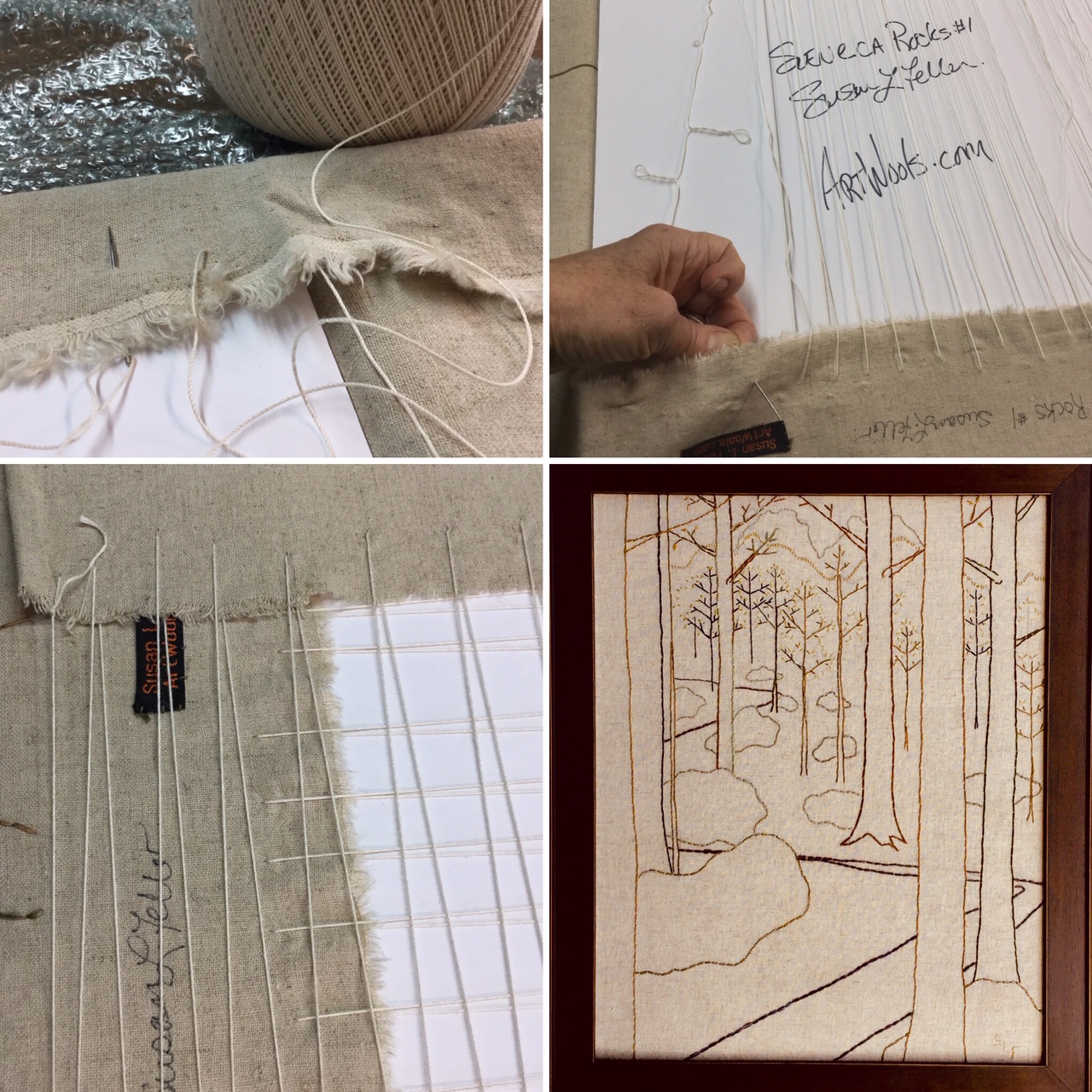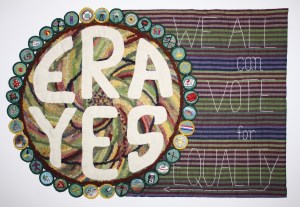Just off a live talk In the Studio through Karen D Miller Studio where the topic of exhibiting fiber art was discussed. This post provides links for your own research and success.
Build a body of work by practicing, experimenting, critiquing and doing. Join arts organizations, regional museums, subscribe to trade media, and network with peers. FiberArtNow.net , Handweavers Guild WeaveSpinDye.org , RugHookingMagazine.com , SurfaceDesign.org . Participate in events, conferences, social media pages and groups created by fiber artists.
We select shows, events for a variety of reasons. The theme might interest you especially if it addresses the focus of your work. Who is the juror? Read their bio and the venue’s mission statement to identify the audience. How do you select what to submit? Excellent photos according to the specifics requested, the best work and, if multiple entries, be consistent in style the jurors and organization will recognize your work in the future. Location of the show might influence entry. Can you hand deliver a large piece? Is shipping an added expense? Will the work be insured on site? What is the sales commission? Is there a catalog in print and online? What are the events planned – reception, gallery talks, workshops, online exhibit, social media promotion?
Preparing work for public view and sale is different than showing to your local guild. Will the utilitarian rug be hung? What does the space require – sleeve and rod, wired to hang, professionally framed with closed back and wired to hang. Pricing should be researched and consistent. Your retail pricing must consider gallery commissions rather than adding the percentage when the piece is entered. Label the work including title, your name and contact, materials and techniques. A brief statement telling your story would be helpful for agents and the person who purchases your work. I include “Working with fibers connects me with the spirits from past generations of artisans. Due to the slow process of my craft, there is time to dwell on the natural subjects and materials I have selected. Now living in West Virginia, I have come full circle-back to the farm and rural lifestyle of my youth. I hope you think about your impact on the beauty conveyed in my art.”


Writing an Artist Statement is as important as making the work. There are several versions requested: short, a paragraph or two introducing the collection or work’s basic ideas and describing how they are addressed in the particular piece. In a larger version (under one page) your voice talks with the audience, how they should view the work, how it relates to overall direction, artists who influence you, the importance of a technique or material. This link gives more specifics and includes samples. Read other artist’s statements and juror’s reviews.

The entry and my statement for Iconic ERA:
STITCH, 2017 at Claypool-Young Art Gallery, Morehead State College, KY
Working with my hands, identifying the materials through touch, sight and sound centers me. Growing up in rural America in 1960-70’s make-do skills were daily lessons. Sewing, crochet, knitting and crafts were taught by my grandmother and mother. Girl Scouting broadened the life learning knowledge developing me into a caring individual.
Iconic ERA is autobiographical. A psychedelic hooked mat is the base for the 1970’s iconic ERA logo. I circled this with my own Girl Scout badges placing the gold edged ones so if connected in the center they would create a PEACE sign. The striped fabric honors acceptance of all people. I used thin lettering of embroidery for the message “We all can vote for equality” to offset the powerful design.
This is one in a series of three exploring equality. The others can be seen at ArtWools.com/Gallery
Did you get accepted or rejected? If the latter how do you react? I often enter knowing my work will at least be viewed by some new critics. If it is rejected I will attend if possible, buy the catalog or view the selections online evaluating the results and learning. Observations from people I interviewed for this talk mentioned more fiber art being entered in art shows than a decade ago. That is good for the field and should raise our efforts to continue innovations, developing style, materials and entering professional images. If the positive is yes how will you promote this opportunity? Update your website/resume with image of the work, links to the venue, local and professional media announcements, attend the opening, talk with artists and audience and follow up with those conversations. Follow the deadlines to deliver work, labeling and packing for shipment, include return shipping payment.
What type of shows are there? How do you find them? Besides actively searching listings for shows on CaFE – CallForEntry.org, FiberArtNow.net/Submissions, GlobalTextileHub.com/ , RugHookingMagazine’s Celebrations and being juried there are other opportunities. Invitational – a curator will work with a venue or develop a theme for traveling shows and invite a group of participants who fill the overall theme. It may be all fiber, or statewide artists, work fitting a theme or the space. This is where networking is important. I have been a resident of West Virginia for two decades, entering annual and bi-annual art shows, participating in arts organizations and received invite to a major exhibit just two years ago. The solo show at Beckley Art Center is a result of my showing with a WV Public Broadcasting program and having a unique technique. Online social media and print opportunities are also avenues to get exposure. Many publications have active media platforms including weekend take overs of their accounts. Check out Fiber Art Now
If you are coordinating an exhibit here is helpful ADA guidelines in creating labels that the viewer can see….. see specifically 703.5 Basically the lettering should be 5/8″ tall, san-serif with first line bold, and no italics
Thank you to the following artists whose experiences are reflected in the above advice: Meryl Cook, Linda Rae Coughlin, Cheryl Ryan Harshman, Tracy Jamar, Lori LaBerge, Kris McDermet , Robby Moore, Executive Director of Beckley Art Center, and a special thanks to Karen D Miller Studio for coordinating this series In the Studio. All the best to fiber artists submitting and spreading the visuals of our techniques.
Visit my work everyday at ArtWools.com


Susan, I really enjoyed and learned from your talk this afternoon. For the first time, next month , I will be exhibiting a rug in a local art show. My main purpose in exhibiting is my small effort in attempting to create interest in fiber arts and especially rug Hooking in my immediate area. When speaking about this art, I will definitely use your suggestions to speak in painters terms. Thank you!
Sonia
LikeLike
You and your work will be good ambassadors for the technique
LikeLike
Wonderful talk today, Susan. You provided so much good practical advice for those of us who are just getting started with exhibiting our work.
Thanks for sharing your expertise.
LikeLike
AS ever Thank You Susan. You are an inspiration to the fiber arts folks, both accomplished and want -to-be’s.
Jeri
LikeLike
Thank you for following along and especially sharing your skills as a leader and creative.
LikeLike